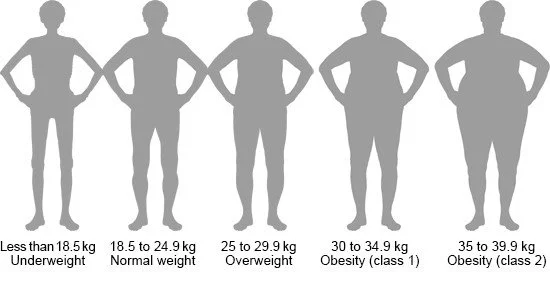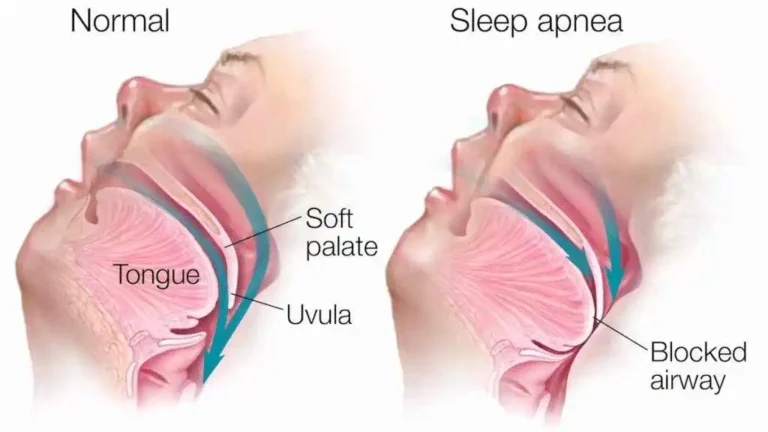Obesity Classes
Which Classes Are Obesity?
Obesity classes are a system used to categorize individuals based on their Body Mass Index (BMI), helping to assess the severity of obesity and associated health risks. Obesity is generally defined as excessive body fat that can lead to various health problems, and these classes are used to guide treatment and preventive measures.
By classifying obesity into different levels, healthcare providers can better understand the risks a person may face, such as diabetes, heart disease, and high blood pressure, and recommend appropriate interventions. The classes include moderate, severe, and very severe obesity, each reflecting an increasing risk for health complications.
The three kinds of obesity are further separated as follows:
- Class 1: 30 to 34.9 BMI
- Class 2: 35 to 39.9 BMI
- Class 3: 40 or above BMI
Two more categories are used by certain educators and healthcare professionals to categorize Class 3 further:
- Extreme obesity: 46–57 BMI
- Obesity at extremely high levels: BMI 65 or more
Classes of obesity examine the general dangers associated with specific ranges rather than evaluating a person’s health. Generally speaking, the chance of developing health issues rises with BMI. These training sessions can also be used for demographic studies and to determine a patient’s eligibility for procedures like bariatric surgery.
Hazards Related to Obesity
Obese people are more likely to contract health conditions like the following compared to people in the BMI category classified as healthy:
- High blood pressure (hypertension)
- Type 2 diabetes
- Heart attack stroke (hemorrhage or interruption of blood circulation in the brain)
- Sleep apnea (During sleep, respiration constantly ceases and resumes for consideration.)
- Breathing problems
- Gallbladder disease
- Certain types of cancer
- Psychological health problems consist of depression as well as anxiety.
- Lowered quality of life
- Problems with the bones and joints, including osteoarthritis (damage from use arthritis), pain, and stiffness
- Liver problems
- Kidney problems
One risk factor for these disorders is obesity. A person’s likelihood of developing a health issue increases with the number of risk factors they possess.
In particular, obesity and other risk factors like the following raise your chance of getting heart disease:
- High blood pressure
- High blood sugar (hyperglycemia)
- High blood cholesterol
- A familial relation with cardiovascular disease who is younger than fifty
- A sedentary lifestyle
- Tobacco use
What does Body Mass Index (BMI) mean?
An individual’s body mass index (BMI), or body fat, should be calculated by height and weight. Although BMI can be used as a screening tool, it cannot be utilized to assess a person’s health individually. To assess a patient’s health and hazards, a healthcare professional must do the proper health assessments.
Children’s BMI is determined similarly to adults. Additional criteria, such as those listed on the Centers for Disease Control and Prevention’s (CDC) growth charts, are used to track the growth of children between the ages of two and nineteen.
How Your BMI Is Determined
- height in meters squared (m2) divided by weight in kilograms (kg).
- Using a BMI calculator or consulting a BMI index chart can make this simpler.
- A BMI calculator for individuals aged 2 to 19 and one for those aged 20 and over is available from the CDC.
Some Important Factors Apart from Obesity Classes
- There is no consideration for the shape of the body, which involves fat, physical substance, and the density of bones.
- It is racially biased because it largely relies on White individuals for its metrics and associated hazards. various ethnic groups may have various BMI ranges. For instance, compared to people of various ethnic origins, those with South Asian, Black African, African Caribbean, and Chinese ancestry may be more susceptible to health issues at lower BMIs.
- Certain demographics, including athletes, pregnant women, and those under the age of 20, should not use this metric.
- Achieving a BMI that is considered to be within the healthy range may not be feasible for many people, and it may not be the optimal weight for them.
- It does not make health or body fat diagnoses Obesity poses health hazards.
Calculating the possible risk for medical disorders can also be done with other technologies. These could consist of:
- Waist circumference: A higher waist circumference raises the risk for particular diseases, including coronary artery disease and type 2 diabetes. However, it can be used as a screening tool, waist circumference—a measurement taken around the waist—cannot be utilized to diagnose personal health issues or body fatness. Six Centers for Disease Prevention and Control. How to lose weight.
- The calipers can be utilized to measure the thickness of skin folds at different spots on the body.
- Additional tools: These include isotope dilution, dual-energy X-ray absorptiometry (DEXA), bioelectrical impedance, and underwater weighing.
Both the onset of obesity and the possibility of acquiring obesity-related health issues are influenced by numerous factors. These could consist of:
- Age
- Sex and gender
- Income and socioeconomic status
- Race and ethnicity
- Living environment and geography
- Access to services
- Family and medical history
- Trauma
- Lifestyle choices, including consumption of food and amount of sport
- Sleep practices
- Medications (such as steroids)
- Disease and associated medical disorders (such as inadequate thyroid hormones, or imbalance)
- Genetics
Therapy for Combating an Obesity Class
To reach your ideal weight or BMI, you must maintain a lifestyle prioritizing your general health. To accomplish this, it’s crucial to:
Assess where you are: To find out where you can begin making changes, keep a journal of your food and drink intake, activities, sleep habits, feelings, and stressors. Look for aspects of your lifestyle that can make losing weight difficult.
Ask for help: Discuss with a healthcare professional how to contact community programs or a qualified dietician for help and resources.
Set realistic goals: Keep your goals small and concentrate on two or three at a time. Losing 5% to 10% of your current weight is a good place to start because it can drastically lower your risk of obesity-related illnesses. obesity’s negative effects on health. Make it a goal to lose between one and two kilograms per week, gently but definitely. Compared to people who lose weight quickly, this improves the likelihood of maintaining the weight loss.
Foster a support system: Appreciate those who will help you achieve your health objectives, such as friends, family, coworkers, and others who share your aims.
Monitor your progress: Assess your progress toward your objectives and change as necessary. Praise yourselves for your successes with things that aren’t food that will keep you encouraged.
More Strict Methods for Losing Weight
Sometimes it can be challenging to lose weight and keep it off with just lifestyle modifications, especially for people who are classified as class 3 obese.
The following therapies may be indicated by your healthcare provider:
Weight loss medications: Weight loss may be assisted by some drugs. Under the supervision of a healthcare professional, they should always be taken as prescribed.
Weight loss surgery: Among the different surgeries that can help with weight loss and maintain it over time is a bariatric operation. Those with a BMI of 33 or more and/or those with a significant obesity-related health issue may be advised to undergo such operations.
Weight loss devices: For example, a gastric balloon system or band. The Food and Drug Administration (FDA) only recently approved them, and it is unknown what the long-term hazards and advantages will be.
FAQs
Which four categories of obesity class exist?
Normal weight obesity, metabolically obese normal weight, metabolically healthy obesity, and metabolically unhealthy obesity are the four phenotypes of obesity that have been identified based on body fat distribution and composition. All of the traits that have been reported are associated with sarcopenic obesity.
Which classes apply to obesity?
underweight. Not more than 18.5.
A healthy weight. 18.5 to under 25.
25 to less than 30 is overweight.
30 or more is considered obese.
28 to less than 34 is class 1 obesity.
Class 2 Obesity: 35–40 years old.
Obesity in Class 3. 40 plus is counted as severe obesity.
Who is liable for classifying obesity?
Adults are classified as overweight if their body mass index (BMI) is greater than 25, and obese if it is greater than 30. Overweight is defined as having a BMI for age larger than one standard deviation above the WHO Growth Reference median in children aged five to nineteen, while obesity is defined as having a BMI greater than two standard deviations above the WHO Growth Reference median.
Which seven factors contribute to obesity classes?
Lack of physical activity.
Unhealthy eating behaviors.
Not getting enough good-quality sleep.
High amounts of stress.
Health conditions.
Genetics.
Medicines.
Your environment.
References
- Obesity classification | World Obesity Federation. (n.d.). World Obesity Federation. https://www.worldobesity.org/about/about-obesity/obesity-classification
- Obesity. (2024, October 29). Cleveland Clinic. https://my.clevelandclinic.org/health/diseases/11209-weight-control-and-obesity
- Nordisk, N. (2024, December 2). Obesity classes 1, 2, and 3: What is the difference? https://www.truthaboutweight.global/global/en/what-is-obesity/obesity-classes.html






